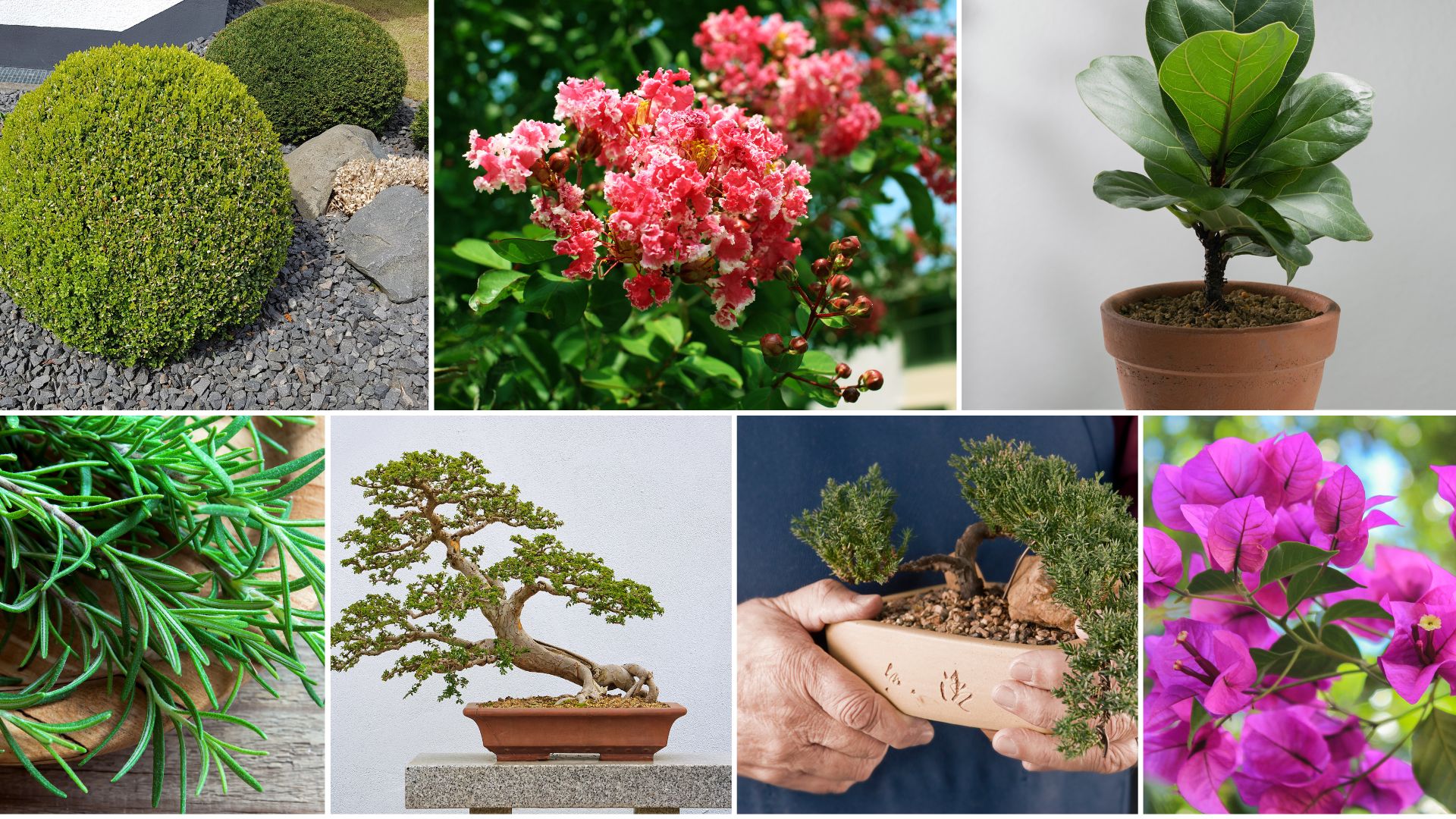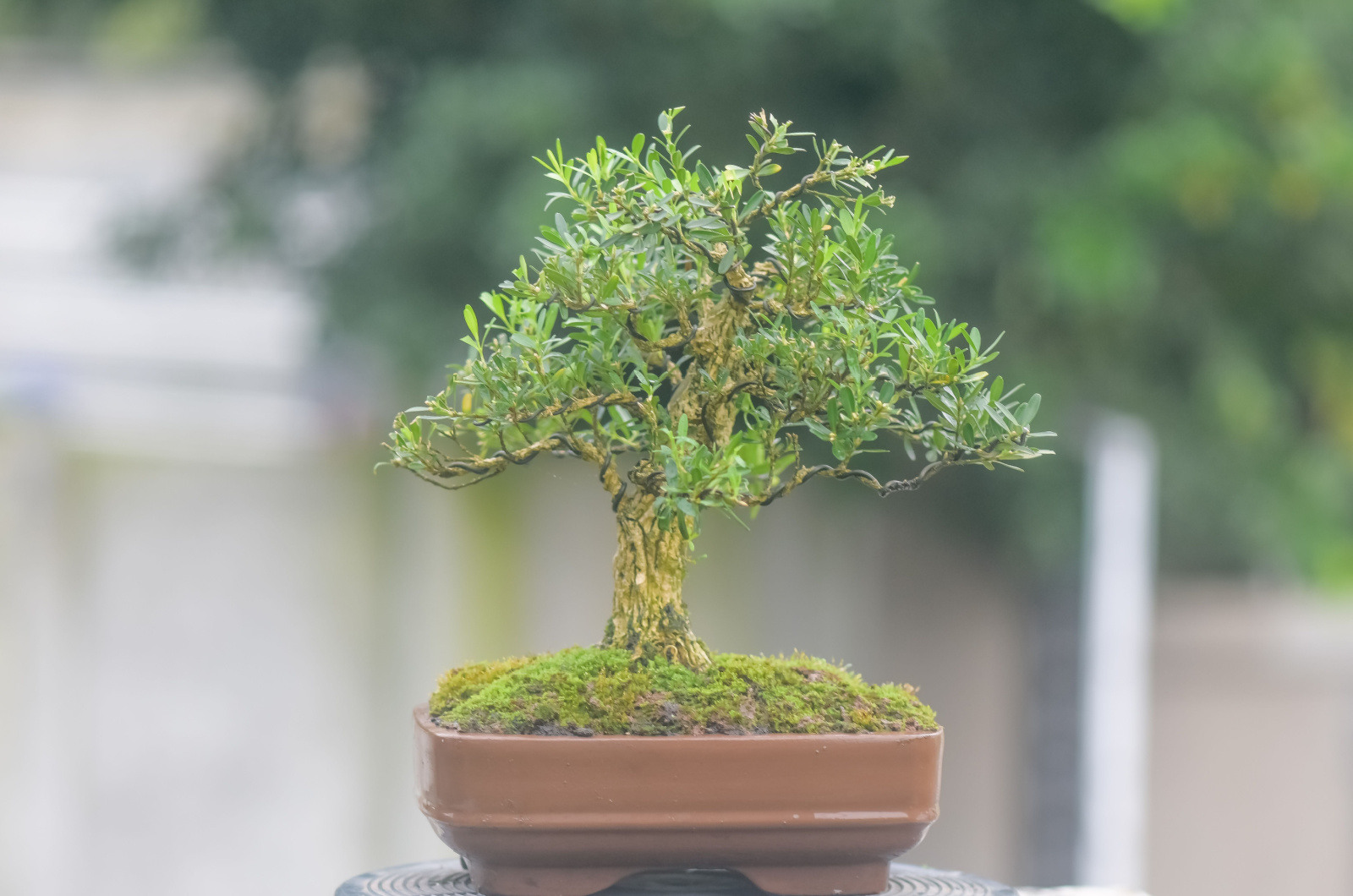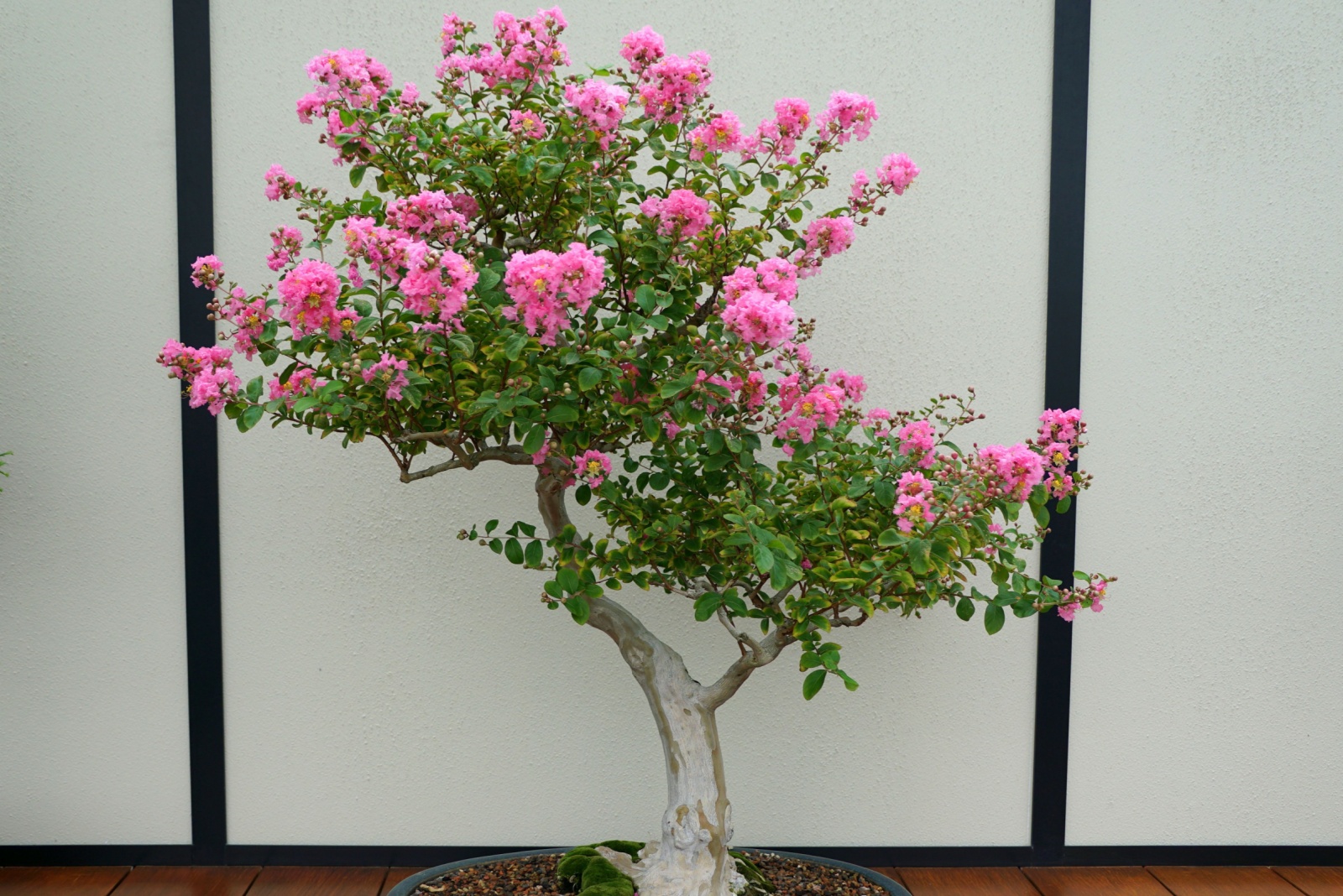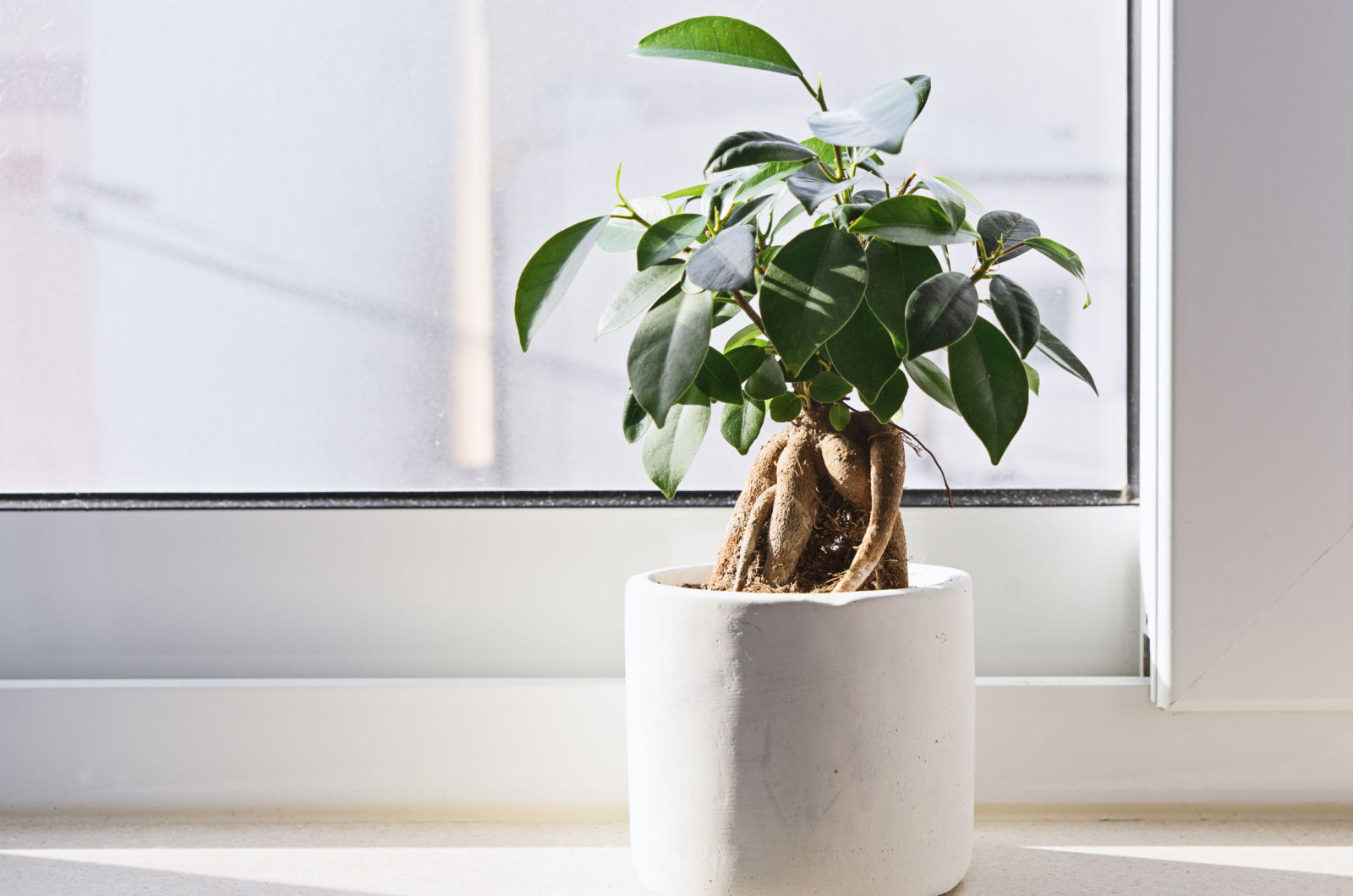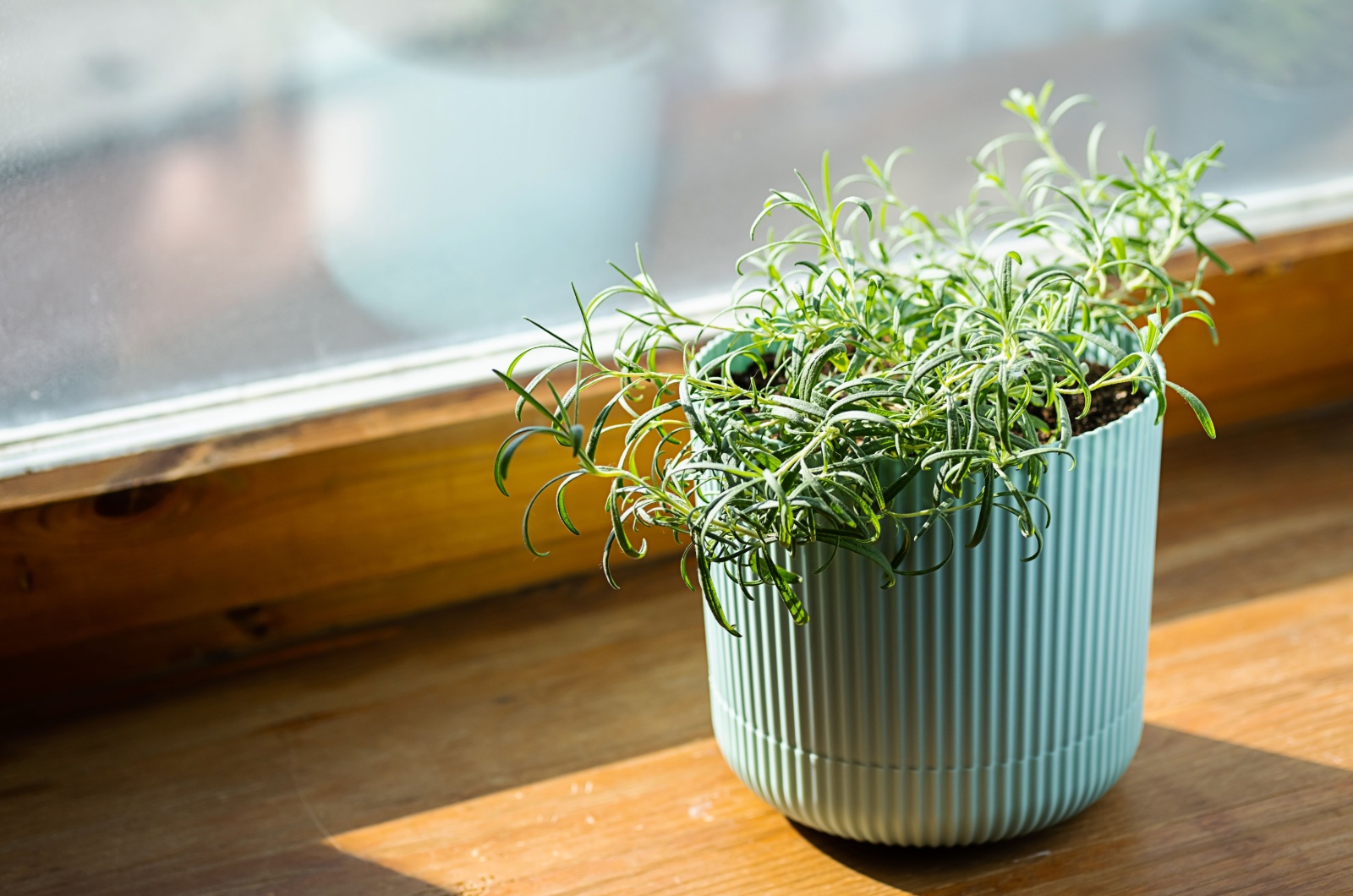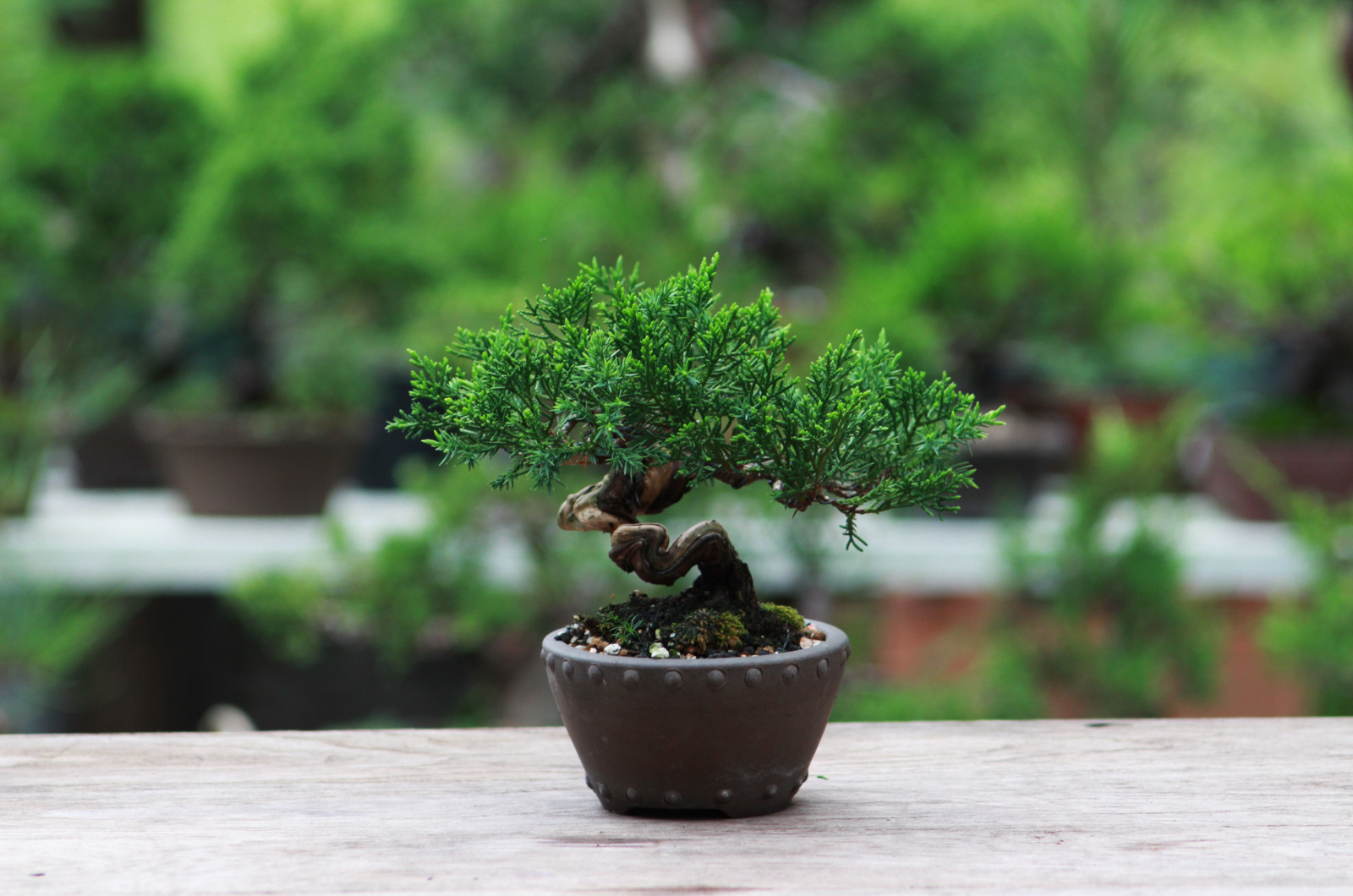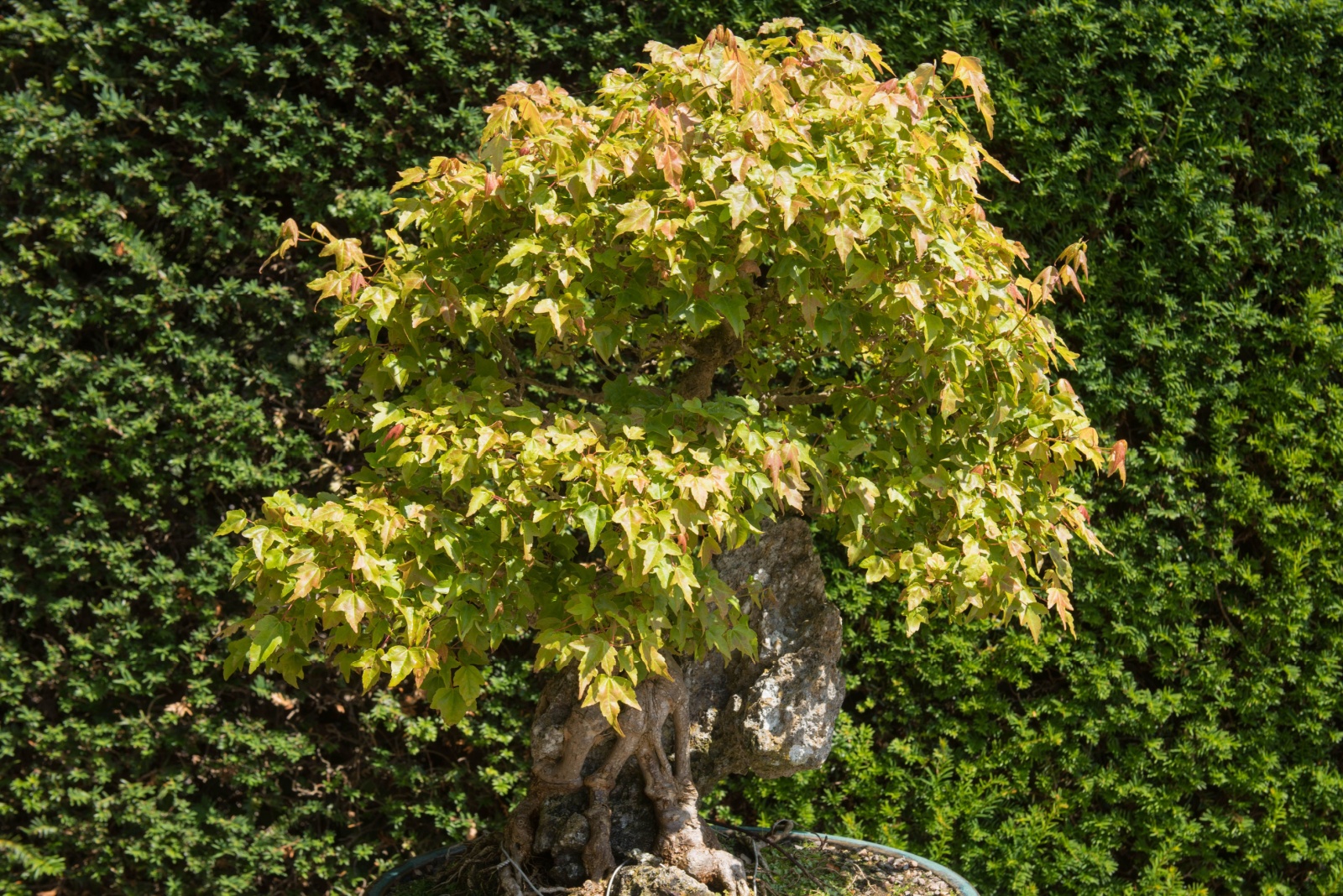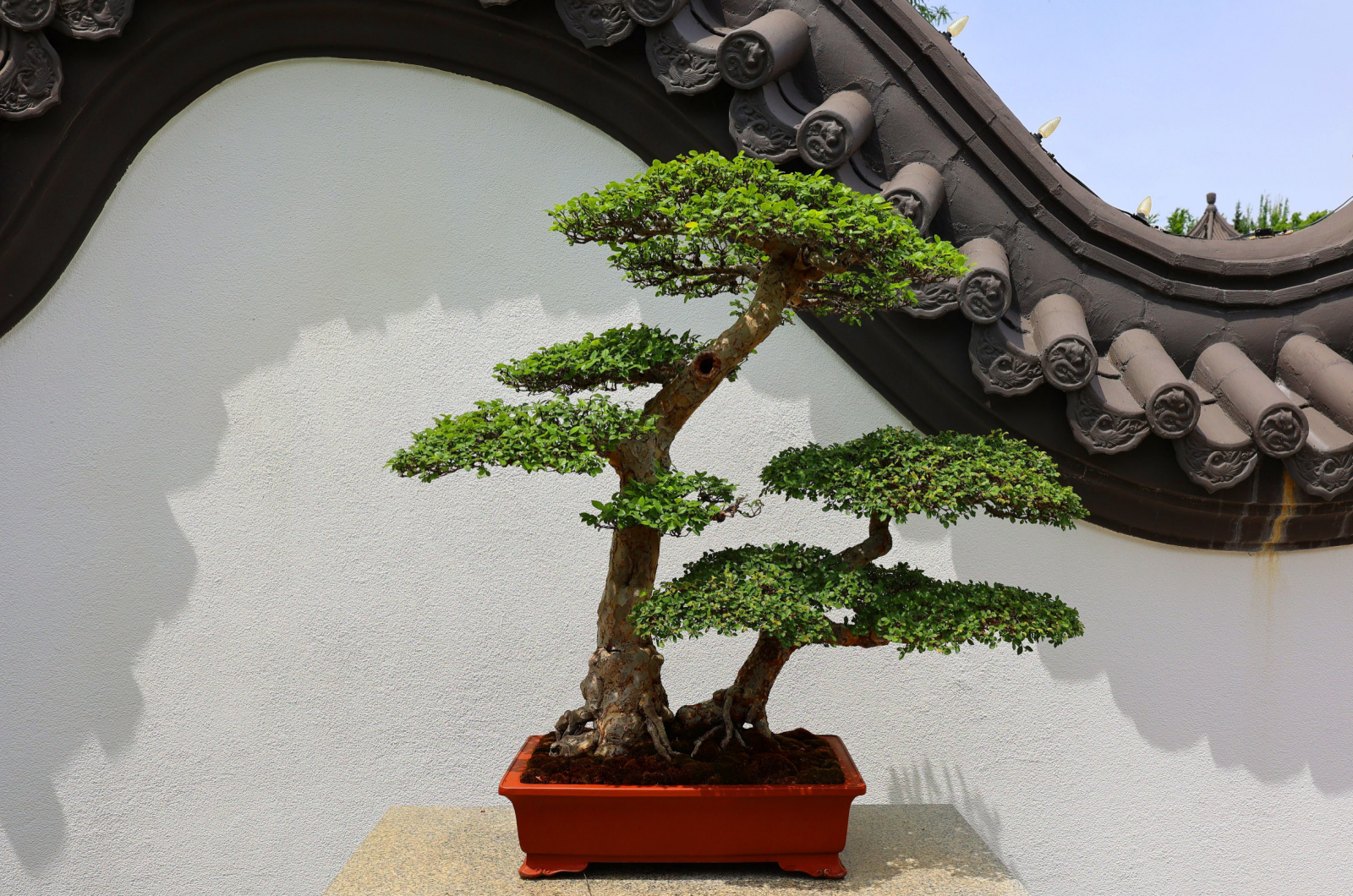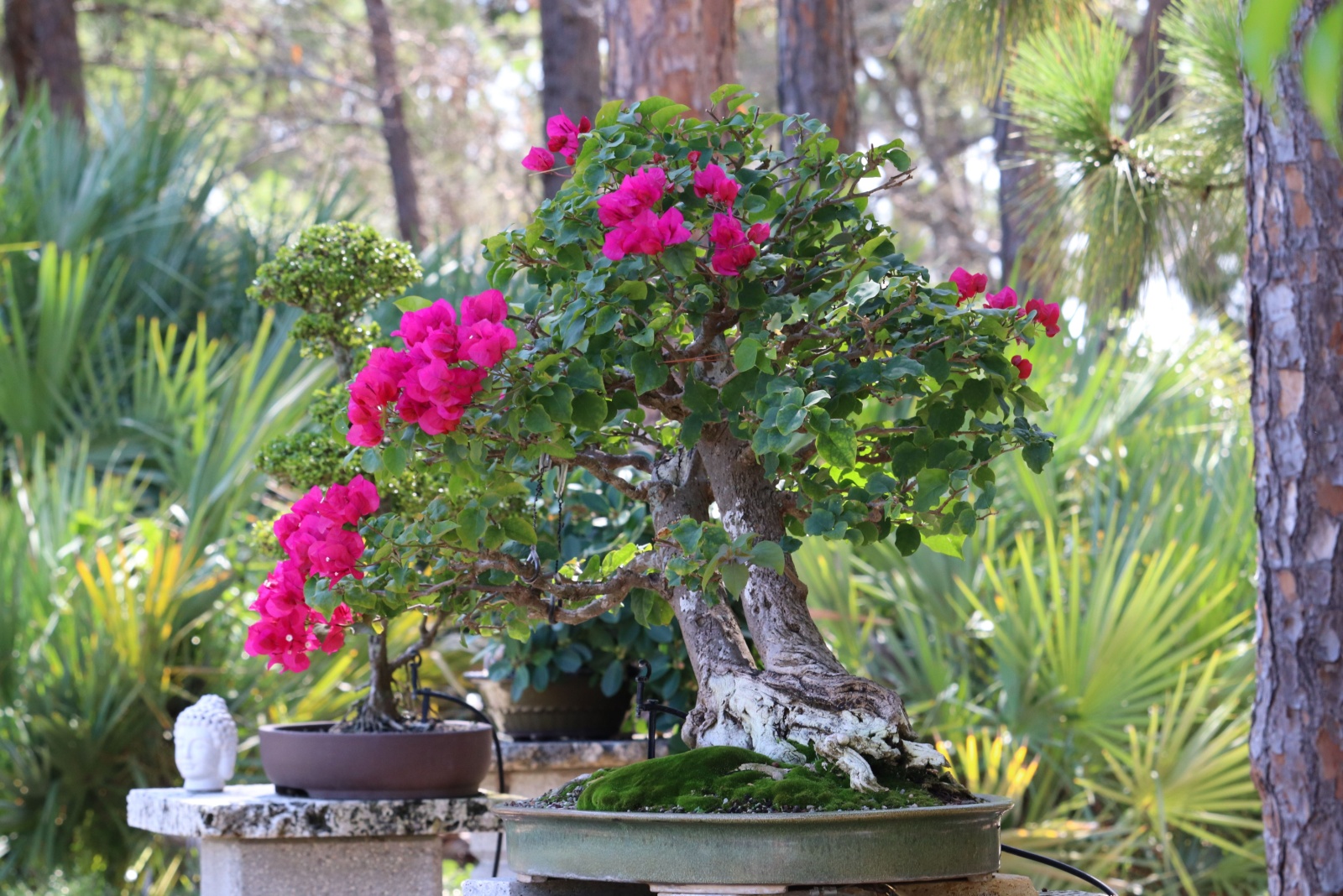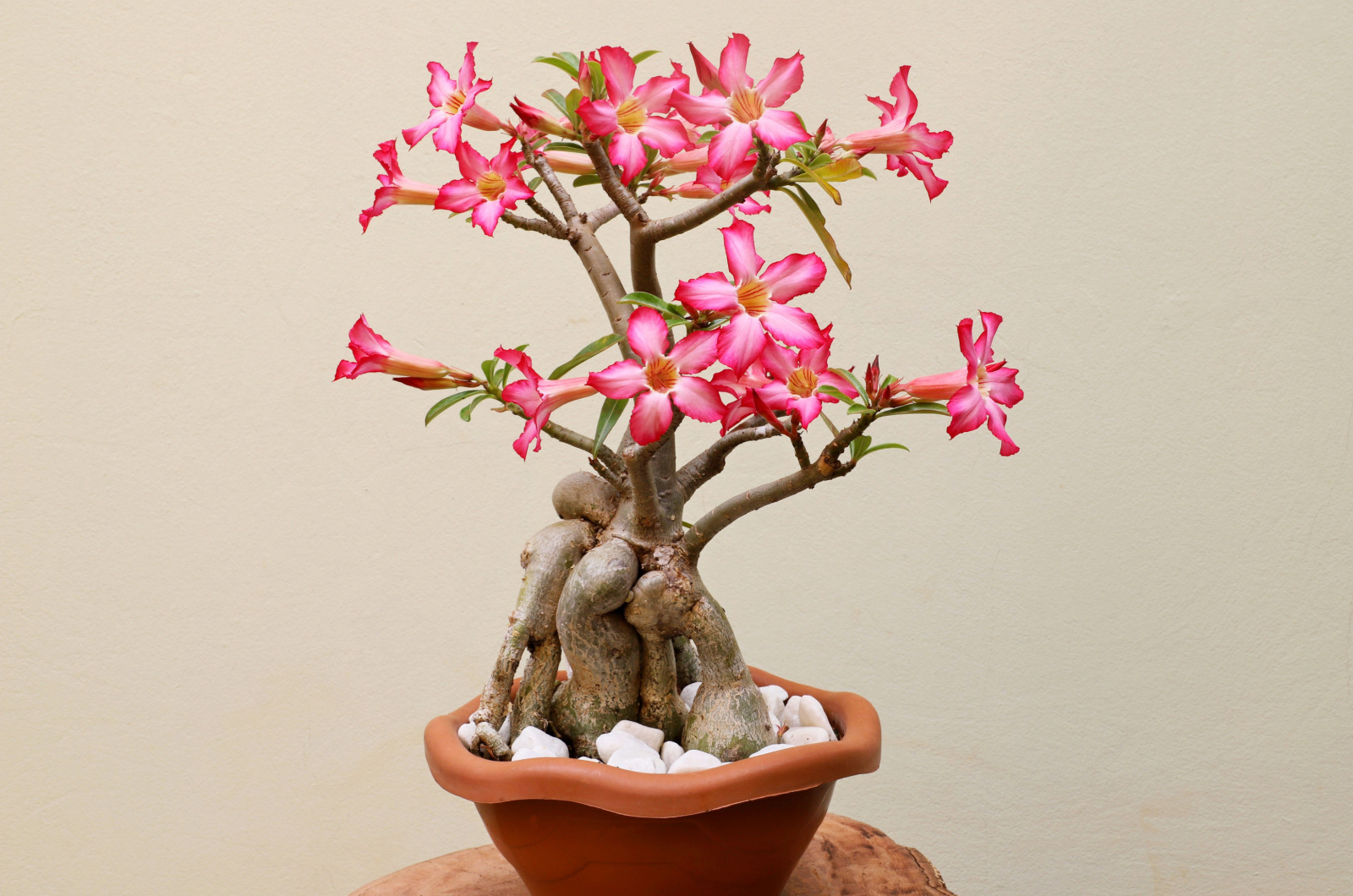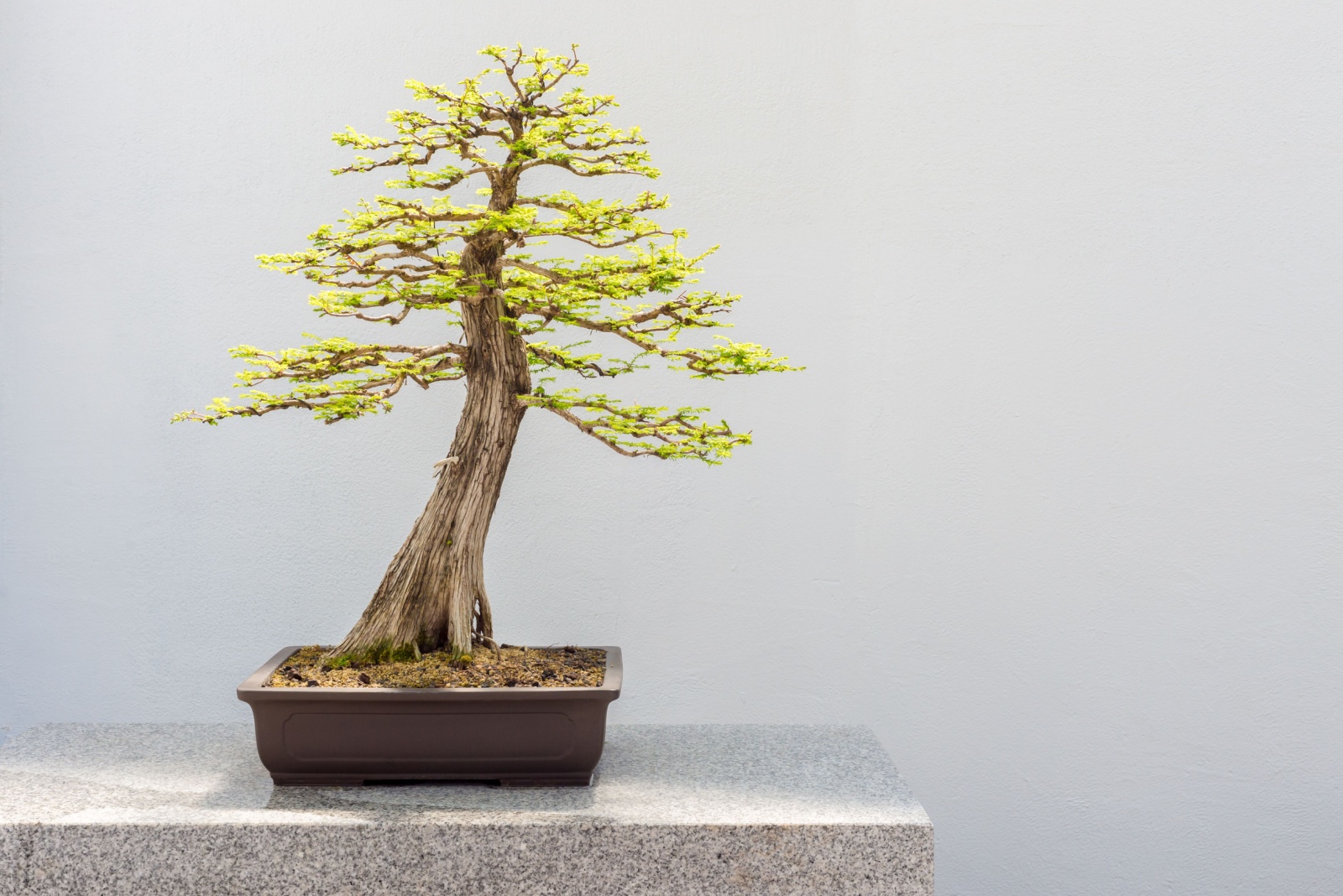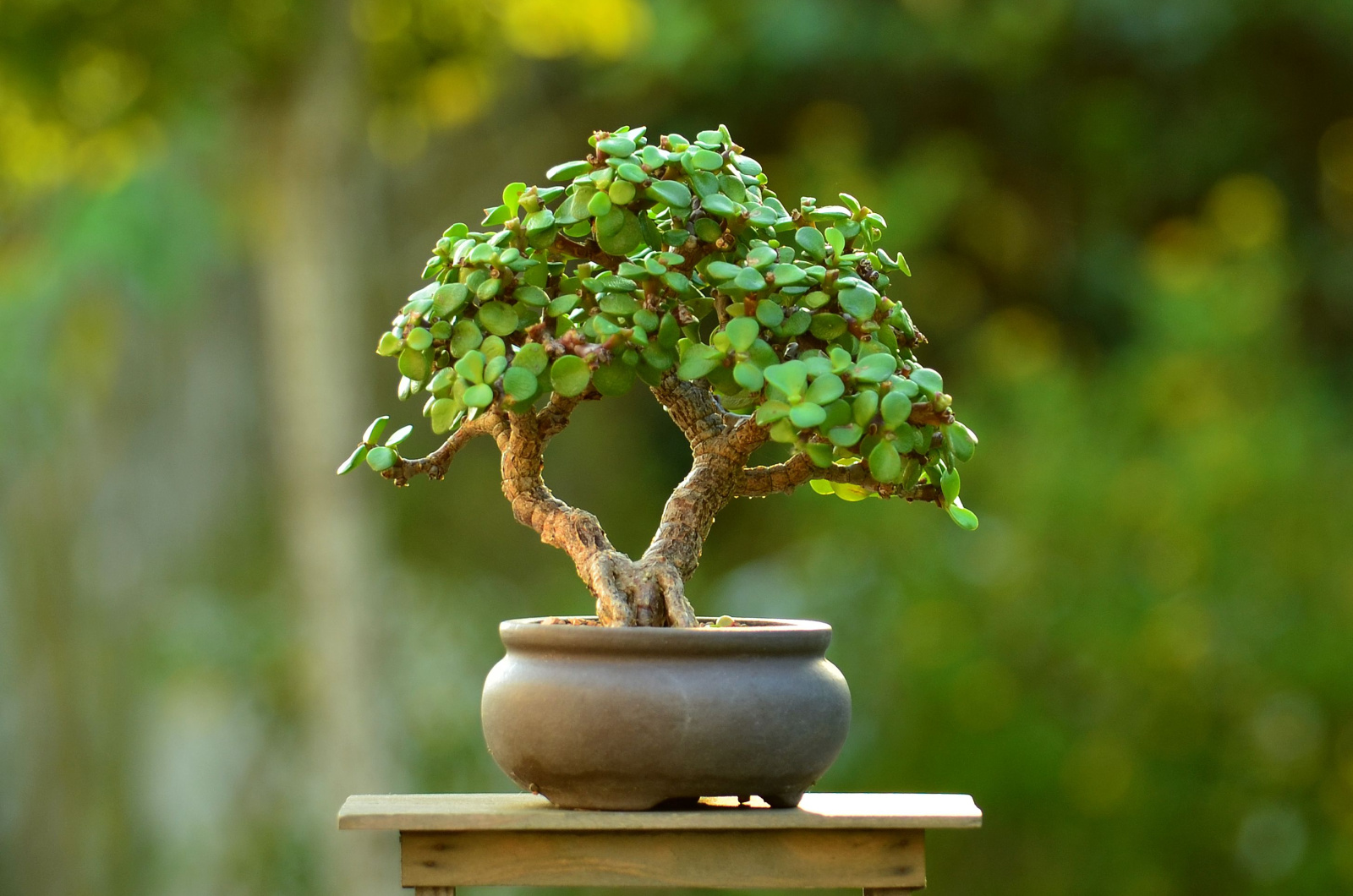Although you might think that growing bonsai trees is only for gardening experts, there are a lot of bonsai trees that are absolutely beginner-friendly. If you are new to this ancient practice and seeking a perfect starting point, then you’ve come to the right place!
It is important to know what type of tree to begin with, so in this article we are going to look at types of bonsai trees that are perfect for beginners.
Let’s get started!
1. Boxwood
Light settings: Full sun, can tolerate partial shade
Ideal soil: Well-draining, loamy
Watering: Allow the soil to slightly dry between waterings
USDA zones: 6 through 8
Boxwood bonsai has small leaves and compact growth, which makes it perfect for beginners. With their unusual growth habits, the shallow surface roots create an interesting art form themselves.
The material required to maintain this bonsai is quite inexpensive, too. Regular pruning maintains its graceful form.
2. Crape Myrtle
Light settings: Full sun to partial shade
Ideal soil: Well-draining and fertile
Watering: Keep soil consistently moist and use a humidity tray in summer
USDA zones: 6 through 9
Crape myrtle, otherwise known as Lagerstroemia indica, is a lovely bonsai tree that has colorful flowers and distinctive bark with green and red colors. It should be pruned after flowering to shape and encourage new growth.
Also read: How To Transplant Crepe Myrtle In 8 Easy Steps
3. Ficus
Light settings: Bright, indirect light; tolerates lower light conditions
Ideal soil: Rich soil that is also well-draining
Watering: Keep soil moist and boost humidity levels
USDA zones: 6 through 11
This tree is a popular bonsai due to its resilience and ability to grow in low light settings. Its glossy leaves and aerial roots create a captivating visual appeal. They truly give off tropical vibes!
Make sure to feed regularly and prune to maintain shape and manage growth. If you want to find out more about ficus bonsai, check out this video: Ficus Bonsai tree care
4. Rosemary
Light settings: Full sun
Ideal soil: Well-draining, sandy
Watering: Let the soil dry between waterings
USDA zones: 8 through 10
It might surprise you, but this popular herb is frequently grown as a bonsai. Its fragrant leaves and fibrous bark make a lovely bonsai tree, plus it’s quite easy to prune rosemary as it can take a lot of pruning without stressing the plant.
Rosemary can take a lot of heat but prefers growing in drier environments with temperatures between 55 to 85 degrees Fahrenheit.
5. Juniper
Light settings: Bright, indirect light
Ideal soil: Loose, well-draining soil mix suitable for junipers
Watering: Frequent watering but let the soil dry out between waterings
USDA zones: 3 through 9
These are popular bonsai trees that are ideal for beginners because they don’t make a fuss about pruning. You can use two different types of juniper: scale and needle-like. Choose the one that best suits your decor!
Be careful where you put your bonsai tree as some can be toxic to cats – in this case, you can put up your bonsai tree a bit higher where it is out of reach.
6. Trident Maple
Light settings: Full sun to partial shade
Ideal soil: Good quality and well-draining potting soil
Watering: Keep soil moist, especially during summer
USDA zones: 4 through 9
Trident maple, otherwise known as Acer buergerianum, originates from Japan and China. It has an unusual fat trunk that might look like an old tree. Its unique leaves and adaptable growth make it a favorite among beginners.
This bonsai is not hard to overwinter and it can tolerate pruning easily. During fall, its green leaves turn vibrant orange and red, thus adding color to your indoor space.
If you are interested in old bonsai trees, then check out this article: This Is How The Oldest Bonsai Tree In The Entire World Looks
7. Chinese Elm
Light settings: Bright, indirect light
Ideal soil: Soil that drains well
Watering: Water deeply but not as frequently
USDA zones: 4 through 9
Chinese elm, also called Lacebark elm and Ulmus parvifolia, is a famous bonsai tree that can be easily grown indoors. It’s perfect for beginners as it can tolerate pruning and shaping. This tree has a more rounded shape and unusual bark with gray, brown, and green shades.
8. Bougainvillea
Light settings: Full sun
Ideal soil: Fertile soil that drains well
Watering: Water frequently but allow the soil to slightly dry out between waterings
USDA zones: 9 through 11
Bougainvillea is an evergreen shrub that can also endure pruning relatively well. Its colorful bracts and tropical charm create a striking presence. Due to their purple, red, and yellow flowers, these shrubs are often used to display marvelous bonsai art.
Also read: How Long Does It Take For Bonsai Tree To Grow? Find Out Here
9. Desert Rose
Light settings: Full sun to partial shade
Ideal soil: Well-draining, sandy soils
Watering: Allow the soil to dry out between waterings
USDA zones: 11 through 12
Desert rose is a succulent called Adenium obesum. It is native to the Arabian Peninsula and tropical regions of Africa. It has exotic flowers in pink, purple, and red colors, along with bulbous and twisted branches that make this plant even more alluring.
10. Bald Cypress
Light settings: Full sun to partial shade
Ideal soil: Well-draining, acidic soil
Watering: Keep the soil moist but not soggy, use a humidity tray in summer
USDA zones: 5 through 10
Bald cypress, also called Taxodium distichum, is cherished for its “cypress knees” – woody structures that grow above the root system. It also has a flat upper canopy and green needle-like leaves that turn yellow and red in the fall.
It is ideal for beginners who live in warmer climates. However, it could be somewhat troubling for those who live in colder climates as bald cypress doesn’t do well in lower temperatures.
11. Jade Bonsai
Light settings: Bright, indirect light
Ideal soil: Well-draining
Watering: Allow the soil to dry between waterings
USDA zones: 10 through 11
We are ending our list with a type of money plant that is believed to attract luck and prosperity. Jade is a succulent plant that has fleshy round leaves and thick stems, making it ideal for bonsai art.
Over time, the jade bonsai develops a tree-like structure with a thickened trunk and branched canopy. It should be pruned to shape and encourage bushiness.

